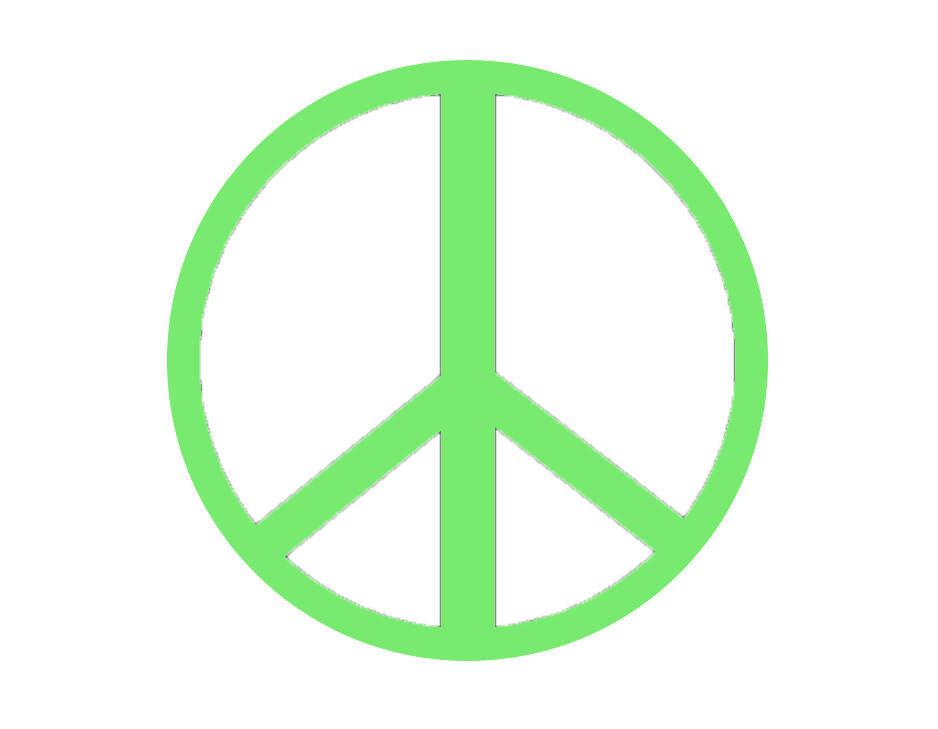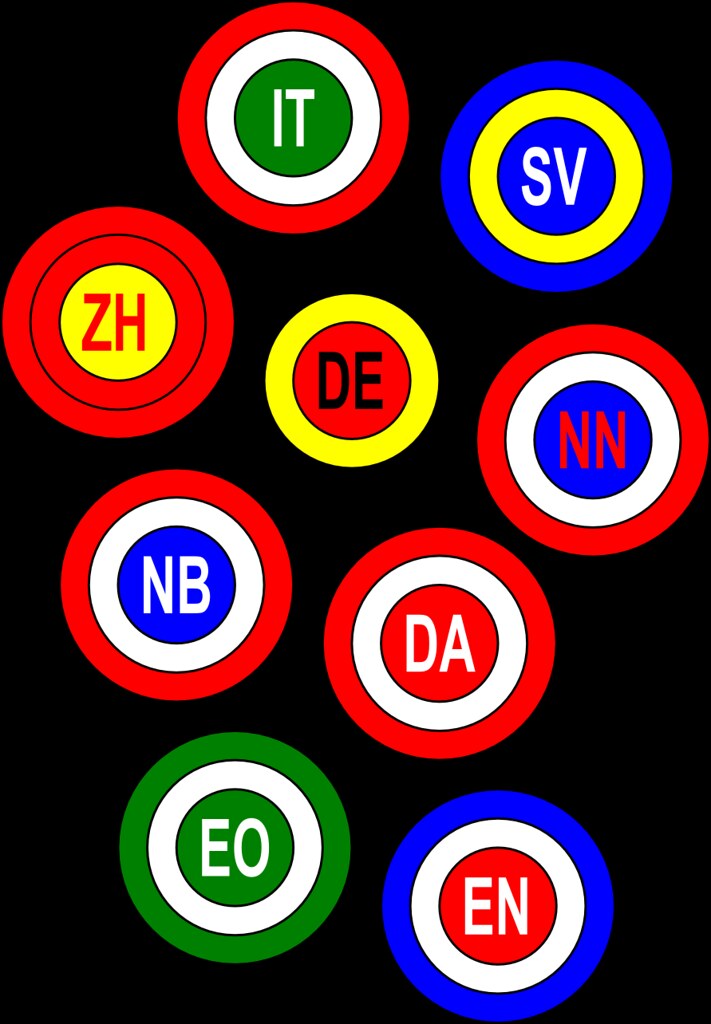
Symbols surround us every day, acting as a fascinating visual shorthand that communicates complex ideas without words. They are woven into the fabric of our culture, appearing on flags, art, products, and even in our everyday gestures and digital communications. These visual marks may seem fixed and instantly recognizable, but their power lies not only in their form, but in the layers of meaning they acquire over time.
Many people don’t realize that the meanings we assign to these images are often not what they were originally intended. A symbol’s journey can be long and full of surprises, influenced by historical events, shifting societal values, and sometimes even simple misunderstandings or deliberate appropriation. These transformations demonstrate the fluidity of human communication, even for seemingly immutable visual symbols.
Exploring the origins and meanings of some of the world’s most famous symbols reveals a fascinating story of evolution. It constantly adapts and changes with the society that uses it.
1. **The Swastika**:Before the shadow of the 20th century loomed over it, the meaning of the swastika would perhaps shock many today. In many ancient cultures, this geometric pattern symbolized good luck and happiness. Its name, derived from the Sanskrit word for “conducive to happiness,” is a testament to its thousands of years of positive connotations.
A revered symbol in the Buddhist, Hindu, and Jain traditions, the swastika was a positive sign long before it gained infamy. Its widespread presence reflects the shared belief that it could bring good luck and prosperity to different civilizations and convey a message of benevolence throughout centuries of human history and cultural development.
Unfortunately, this ancient symbol underwent a catastrophic transformation in the 1930s. Adolf Hitler appropriated the swastika for the Nazi Party, permanently transforming it into a symbol of hatred, oppression, and genocide. This appalling act completely obscured nearly 5,000 years of positive, benevolent meanings, forever altered the modern world’s perception of the symbol, and made it difficult for many to ignore its recent horrific history.

2. **The Peace Sign**:This ubiquitous peace sign, a circle with a line pointing downwards through the middle, bisected by two lines sloping downwards from the centre, has relatively modern and specific origins. Rather than being derived from some ancient philosophical ideal, it was the symbol of a very specific movement in 1958: the UK Campaign for Nuclear Disarmament.
The symbol was designed by Gerald Holtom, who explained its composition. It combines the signal flags of the “N” and “D”, standing for “nuclear disarmament”. Holtom described the centre symbol – a line pointing downwards within a circle – as a desperate man with his arms outstretched, a powerful image that reflected the fears of the nuclear age.
While the origins of the peace sign are tied to the anti-nuclear movement, it quickly transcended its original context. Today, it is widely understood to represent peace in a broader sense, encompassing non-violence, harmony and peace on a global scale. This modern interpretation is a far cry from its specific anti-nuclear origins, showing how a symbol designed for a single purpose can be adopted and redefined by wider social needs and desires.

3. **The Thumbs Up Gesture**:Today, we give a thumbs up to show approval, agreement, or positive emotion—it’s a simple, universally known gesture. However, if you were to travel back in time to ancient Rome and watch gladiators fight in the Colosseum, the thumbs up could have a very different, potentially deadly meaning.
Historians dispute the exact details, but based on the context, it’s assumed that the ancient Romans did sentence gladiators to death with the thumbs up gesture. The gesture meant “raised sword” or “execution,” in stark contrast to our modern understanding.

4. **The Heart Symbol**:The familiar and stylized heart shape we use today to represent love bears a curious resemblance to the organ that circulates blood in the human body: the heart. This visual difference has led to much speculation about its origins, with some theories suggesting that for a symbol so closely tied to the sentiment of love and Valentine’s Day, its origins are less romantic than one might expect.
One prominent theory suggests that the heart shape has nothing to do with anatomy, but botany. It’s thought to have originated from depictions of leaves, such as ivy or fig leaves, or even the seed pods of the now-extinct plant spatholobi. Notably, spatholobi was reportedly used in ancient times for contraception, adding another unexpected layer of history to the symbol.

5. **The Skull and Crossbones**:Today, we may see skulls and crossbones on Halloween decorations, children’s pirate costumes, and even some fashion items, often with a sense of playful danger or rebellion. However, this seemingly morbid symbol has a long and rich history that predates its association with pirates and has roots much older and darker, serving as a powerful reminder of our mortality.
The symbol did not first appear on pirate flags, but in medieval tombstones and church death notice art. Often found in religious sites or cemeteries, these visual reminders were meant to remind people of the inevitability of death—“memento mori” literally means “remember that you will die.” It’s a powerful and thought-provoking symbol designed to encourage reflection on the transience of life.
6. **The Five-Pointed Star**:The five-pointed star, also known as the pentagram, is a geometric shape that has many important meanings in different cultures and periods, and its symbolic interpretations show extraordinary diversity. In ancient Mesopotamia, it was used as a protective symbol, believed to ward off evil and bring a sense of security to those who used it.
As history progressed, early Christians also adopted the symbol. For them, the five points symbolized the five wounds of Christ and had a deep connection with religious suffering and sacrifice. During the Renaissance, people rekindled interest in classical learning and mathematics, and the five-pointed star was also associated with mathematical perfection and the golden ratio, and was highly regarded for its geometric properties and aesthetic harmony.
The evolution of the five-pointed star did not stop there. It is often used as a military rank symbol, symbolizing rank and authority, and appears on national flags around the world as an important national symbol, symbolizing unity, national status or ideological principles.
7. **The Rainbow**:The stunning natural phenomenon of a rainbow after a storm has fascinated humanity for thousands of years and inspired a variety of symbolic interpretations across cultures and religions. In the Judeo-Christian tradition, the rainbow holds particular significance, representing God’s promise not to flood the Earth again, a promise of divine restraint, and a reminder of human survival after the Great Flood.
The ancient Greeks also believed that the rainbow had divine significance, being the path of the goddess Iris. Iris was considered a messenger of the gods, especially Hera, and the rainbow was believed to be the bridge she used to connect heaven and earth, connecting the divine world to the mortal world and carrying messages between the two.
Today, not only does the rainbow remain associated with ideas of diversity, inclusion, and hope, it has also taken on a powerful new role as a major symbol of the global LGBTQ+ pride and rights movement. This meaning has only developed in recent times, especially in the late 1970s, showing how a symbol rooted in ancient religious and mythological beliefs has been adopted and redefined by modern social and cultural movements, becoming a powerful symbol of identity, visibility, and the ongoing struggle for equality and acceptance.

Delving deeper into the fascinating world of symbolic evolution, we find more visual shorthand marks that show surprising evolutions in their journey through history, reflecting the changing landscape of human culture and understanding. Seemingly simple and fixed images often carry layers of forgotten history and accumulated meaning, sometimes undergoing drastic transformations away from their original purpose.



